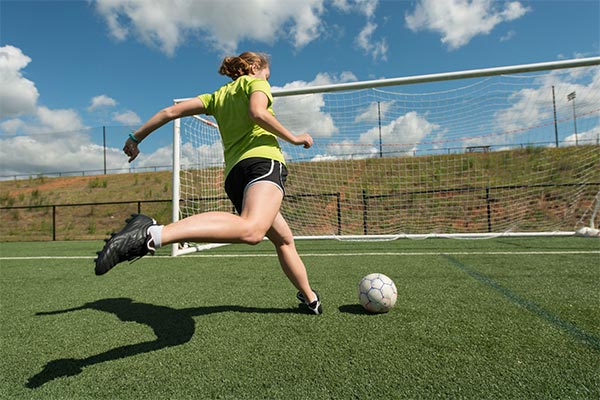
More than 3.5 million youth are treated medically for sports injuries every year.1 Football and soccer have proven to be two sports most often associated with injuries, but all sports activity comes with at least some risk. And while not all injury hazards can be avoided, there are a few risk factors that athletes and sports enthusiasts should be mindful of on and off the field.
Contributing Risk Factors:
- Overtraining: Stressing the same joints and ligaments day in and day out can produce muscle fatigue. Muscle fatigue makes an athlete more susceptible to injury. Incorporating rest into a training regiment helps to eliminate the wear and tear on specific joints and muscle groups. Cross-training can also help ensure body balance and minimize muscle and joint attrition.
- Improper Warm-Up/Cool Down: A proper warm-up is crucial to preventing a sports injury. Sports are often high-impact, high-intensity activities, so it is critical to warm up muscles and joints before jumping into play. A cool down after a sporting event is also imperative. It allows the heart rate to gradually slow while simultaneously increasing muscle elasticity. Both of which are important to avoid injury.
- Poor Technique: To develop and improve in any sport, players must move often and repetitively. If an athlete is practicing poor technique or form, joints and tendons become at risk of tearing and straining. Receiving single sport-focused instruction helps players master the proper technique.
- Unsafe or Lack of Equipment: Many athletes regularly use sports equipment that is unsafe. Even using safe equipment that is the wrong size or the wrong weight can increase the chance of a sports-related injury significantly. And of course, not wearing the suggested protective gear leaves an athlete exposed and at a higher risk of injury.
Fortunately, most sports injuries are relatively minor. However, more serious injuries do occur and sometimes require surgery. Being aware of potential risk factors empowers athletes and players with knowledge and this is the first step to lessening risk.
If you find yourself sidelined by a sports injury, let Dr. Wardell and the team of experts at Sports Medicine & Orthopaedic Center help get you or your loved one back in the game. Book an appointment at SMOC today!
Dr. Richard Wardell is board-certified and fellowship-trained in Sports Medicine and has experience in a broad spectrum of basic to advanced treatments, including hip and shoulder arthroscopy and surgery for complex knee injuries. He is committed to individualized care and serves at Sports Medicine and Orthopaedic Center in Suffolk and Chesapeake, Virginia.
1 https://www.stanfordchildrens.org/en/topic/default?id=sports-injury-statistics-90-P02787











